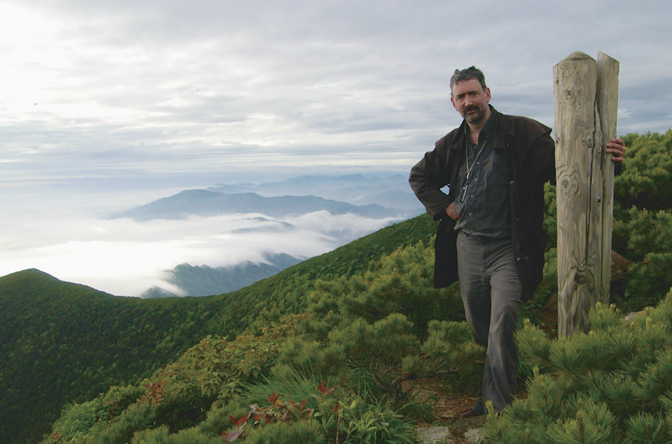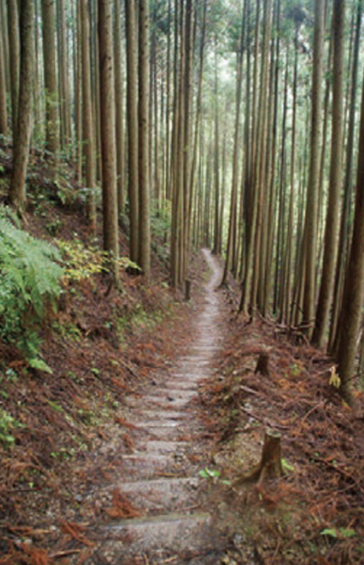Peter Neville-Hadley
British author. Worked in theater marketing before moving to writing. Has written multiple travel guides and reference works along with cultural features based on his travels, including trips along Japan’s ancient trails. Lives in Canada with his wife and two children. Writes for the Wall Street Journal , Hong Kong’s South China Morning Post , and newspapers across Canada and the United States.
Anyone who writes for a living appreciates discovering a story yet to be told. Japan, very safe, still relatively littlevisited yet easily accessible, is full of such stories.
Twenty-five years ago I was unexpectedly given an immersion in Japanese culture in a manner unlikely to be repeated. I’d been working in marketing for London’s National Theatre, but was now contracted to find vast audiences for the 350 Japanese cultural events across 200 locations that would make up the United Kingdom's Japan Festival 1991.
It was a frantic and stressful year, but it left me with an affection for Japanese culture that I carried with me into journalism, returning repeatedly to write on Japan for various newspapers and magazines around the world.
But in 2001 an invitation from then newly-launched Japanese cultural trekking specialists, Walk Japan, to join a trek along the ancient Nakasendo route from Kyoto to Edo (now Tokyo), introduced me to a new aspect of Japan altogether.
Visitors who merely ricochet between cities by bullet train remain unaware that Japan seems almost to have been purpose-built for trekking. Its volcanic countryside offers gentle climbs past tiny temples and through well-preserved post towns to passes with fine views that always compensate for the effort made. Mineral-rich geothermally heated spring waters, cleverly piped straight to baths at each night’s accommodation, provide the perfect balm for any aches at the end of a day on foot.
Initially the point of joining a walking tour group was to soothe the nervousness of some traditional inns dealing with foreigners unfamiliar with the hopscotch of footwear changes required, the etiquette of shared bathing, and a range of foods rarely if ever encountered in Japanese restaurants overseas. Walk Japan’s guides offered reassurance that the requisite education had been provided.
A recent walk on one of the Kumano pilgrimage routes to visit the three Grand Shrines of the remote Kii Peninsula, showed how such concerns have eased. Evenings were spent in historic inns seated on the tatami-matted floor while wearing a cotton yukata gown and haori jacket—as other travellers had for centuries—eating meals fit for a lord let alone a humble pilgrim. Even in remote villages, innkeepers were welcoming and eager to explain their local specialties.
The still largely deserted routes were newly signposted in English, and the occasional Japanese pilgrims encountered were warmly encouraging. Tourists descending from tour buses at major shrines expressed surprise and admiration to see us emerge from the surrounding forest having traveled the traditional way.
Tramps up hillsides and along sunlight-dappled ridges made reaching the vast cedar-built halls of the shrines, trimmed in gold, all the more rewarding. We were accompanied by a local practitioner of shugendo , a mountain-worshipping fusion of Shinto and Buddhism, who carried a conch blown to announce our departures and arrivals, just as would have happened in the Kumano routes’ sixteenth-century heyday. However rich and entertaining the bustle of the cities, contact with ancient Japan is made on quiet, pheasant-haunted footpaths.
I never turn down an invitation to visit Japan. There are so many stories still to tell.







































































































